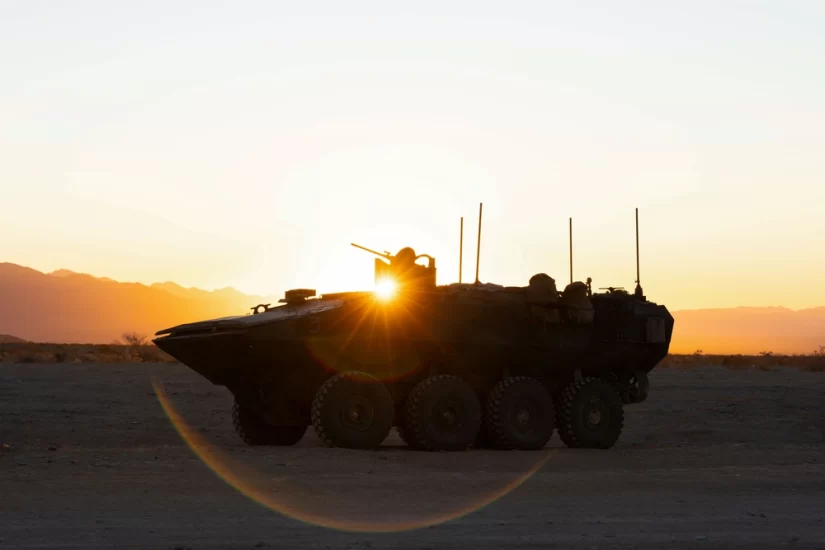The United States Marine Corps, Program Manager, Light Armored Vehicle (PM LAV) with the assistance of the Army Contracting Command – Detroit Arsenal is seeking information from industry to inform and better understand the availability of technology that supports enhancing the family of light armoured vehicles survivability against uncrewed aerial systems (UAS).
PM LAV is interested in understanding industry’s counter-small UAS (C-sUAS) technologies that can operate in a contested electromagnetic operational environment (EMOE) and can Detect, Track, Identify, and Defeat (DTID). The defeat mechanism can be kinetic and/or non-kinetic. The Request for Information (RFI) says that the PM intends to focus on the C-sUAS within the topic areas listed below to address an interim requirement that significantly increases the survivability and effectiveness of LAV’s at a relatively low cost (Less than <USD 2M).
- Group 1 and 2 mounted DTID: Systems mounted/integrated on an LAV, used by mounted forces that can DTID Groups 1-2 UAS. This includes mounted configurations with modular, scalable architecture that can be integrated into a combat vehicle. The system must be a complete solution to be assessed, having a complete kill chain from sensor to defeat mechanism. Solutions should assume they will receive tracking data only from their systems to facilitate detection and targeting. A mounted solution to the platform is required. Adjunct passive systems (e.g., Electro-Optical/Infrared) that do not interfere with the platform organic sensors are permitted. Partial solutions, such as those providing only radar or find, fix, and track capabilities, will not be evaluated.
- Proposed solutions must address the entire kill chain, enhancing find, fix, track, and identification capabilities while incorporating kinetic/non kinetic defeat functionality without interfering with the platform’s existing combat systems. Systems can have multiple weapons systems or defeat mechanisms for various ranges of threats.
- The C-sUAS capabilities that meet the description above must be able to successfully operate in a contested electromagnetic operating environment where the electromagnetic spectrum (EMS) is experiencing interference or adversary effects across the spectrum, to include active jamming.
- Successful operation within a contested EMOE means that the C-sUAS platform must be able to detect, track, identify, and defeat Group 1-2 UAS. The sensor systems must effectively operate while being actively interfered with or targeted by adversary jamming systems or experiencing other electromagnetic interference. The sensor systems must then accurately cue effector systems that are impacted by the contested EMOE. Finally, the effector systems then must effectively defeat, deny, or degrade threat UAS within this contested environment.
- Methods to enable system resiliency and successful operation within a contested EMOE may include but are not limited to the following: incorporating low probability of detect, low probability of intercept, adaptive beamforming, frequency hop, and other means to maneuver across the EMS. The C-sUAS system must have the ability to understand they are being impacted within the EMS and autonomously provide information to aid the operator in maneuvering elsewhere within the EMS, to enable functionality, continued operation, and successful mission performance.
Technical merit and relevance will be evaluated based on the system’s ability to meet the attributes listed above and information regarding technology readiness level, integration requirements, availability, cost and other parameters.
Responses are requested by June 12.
For more information
RFI for vehicle-mounted C-sUAS at SAM.gov
Image: (U.S. Marine Corps photo by Cpl. Anna Higman)




